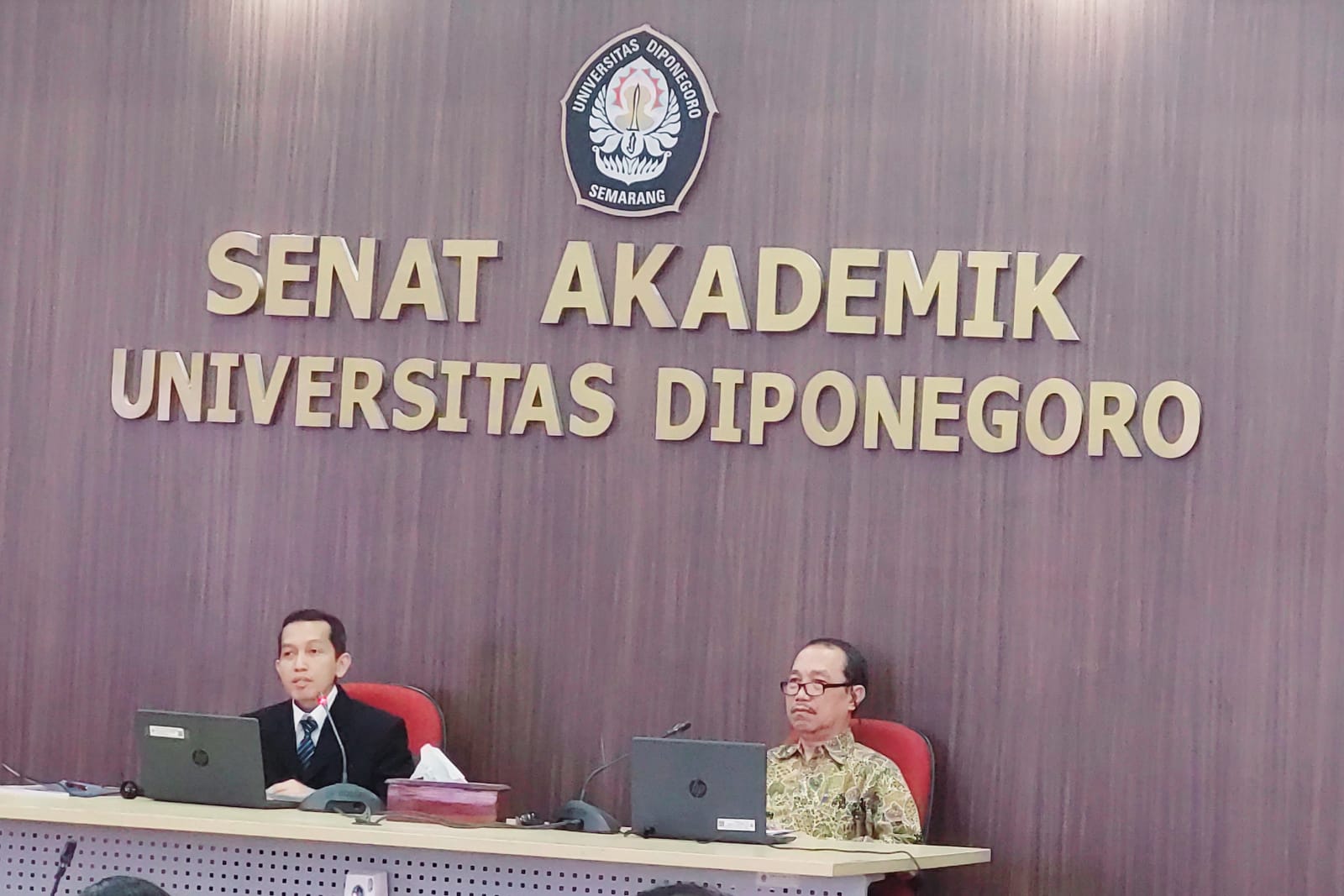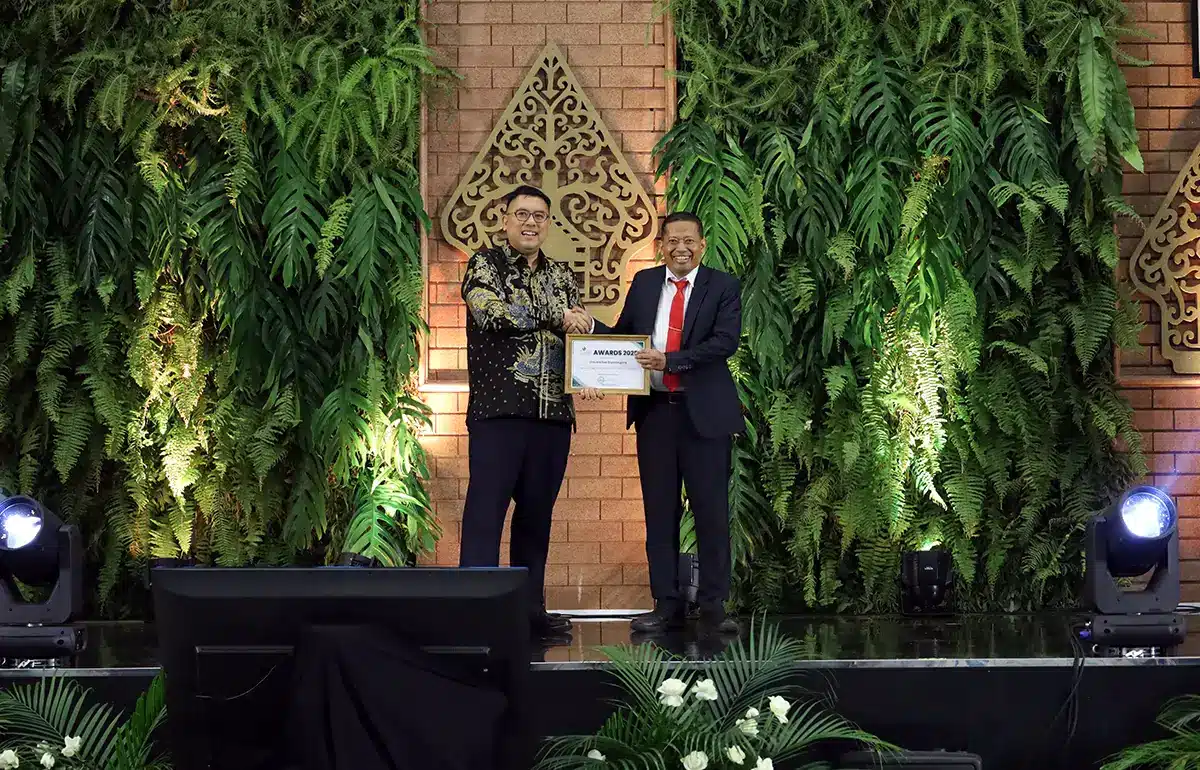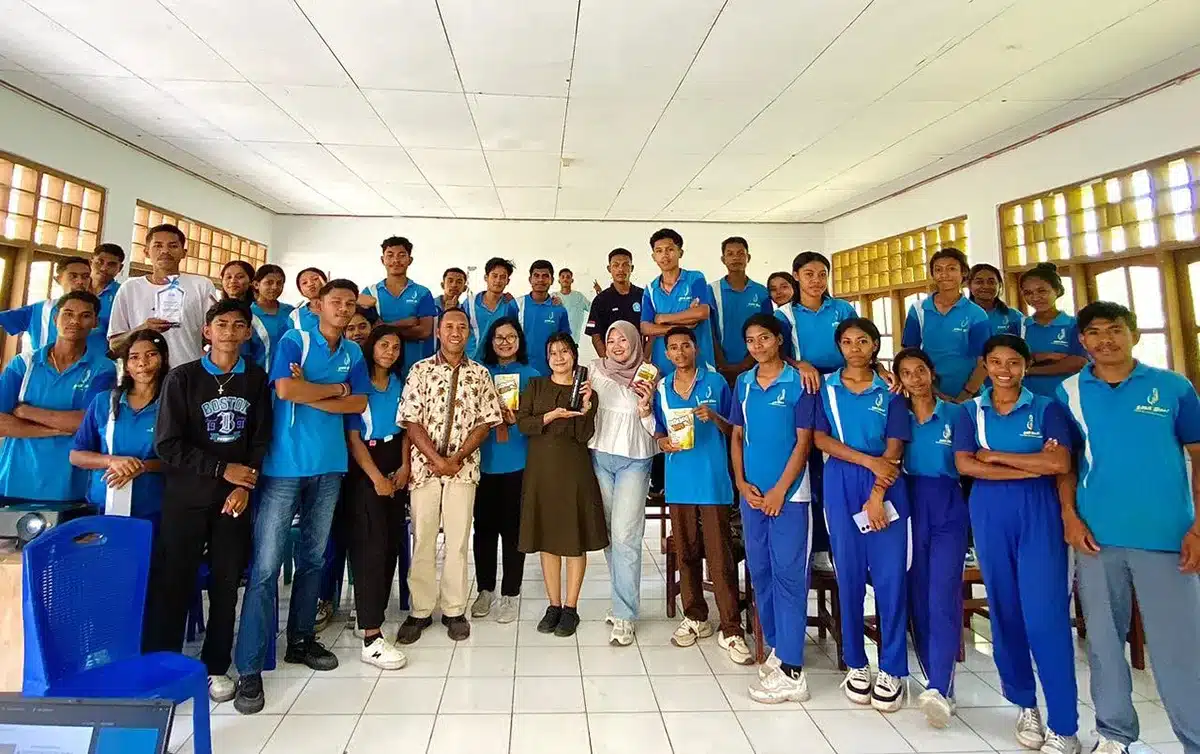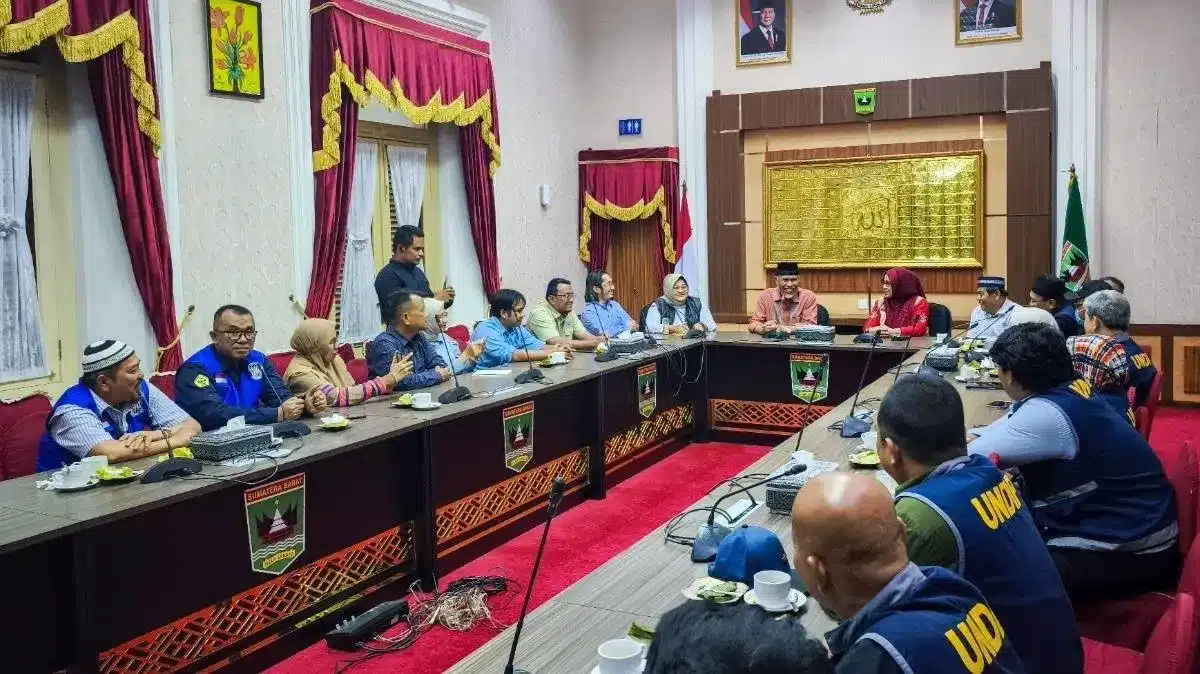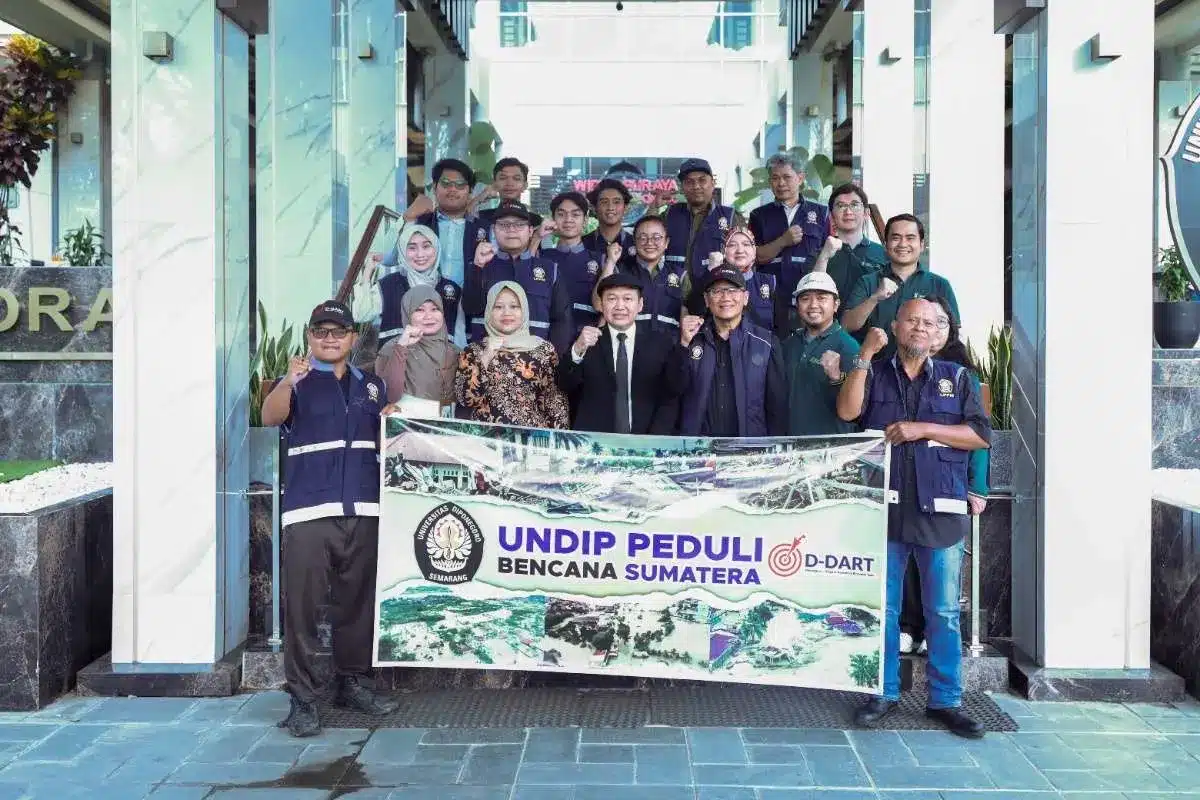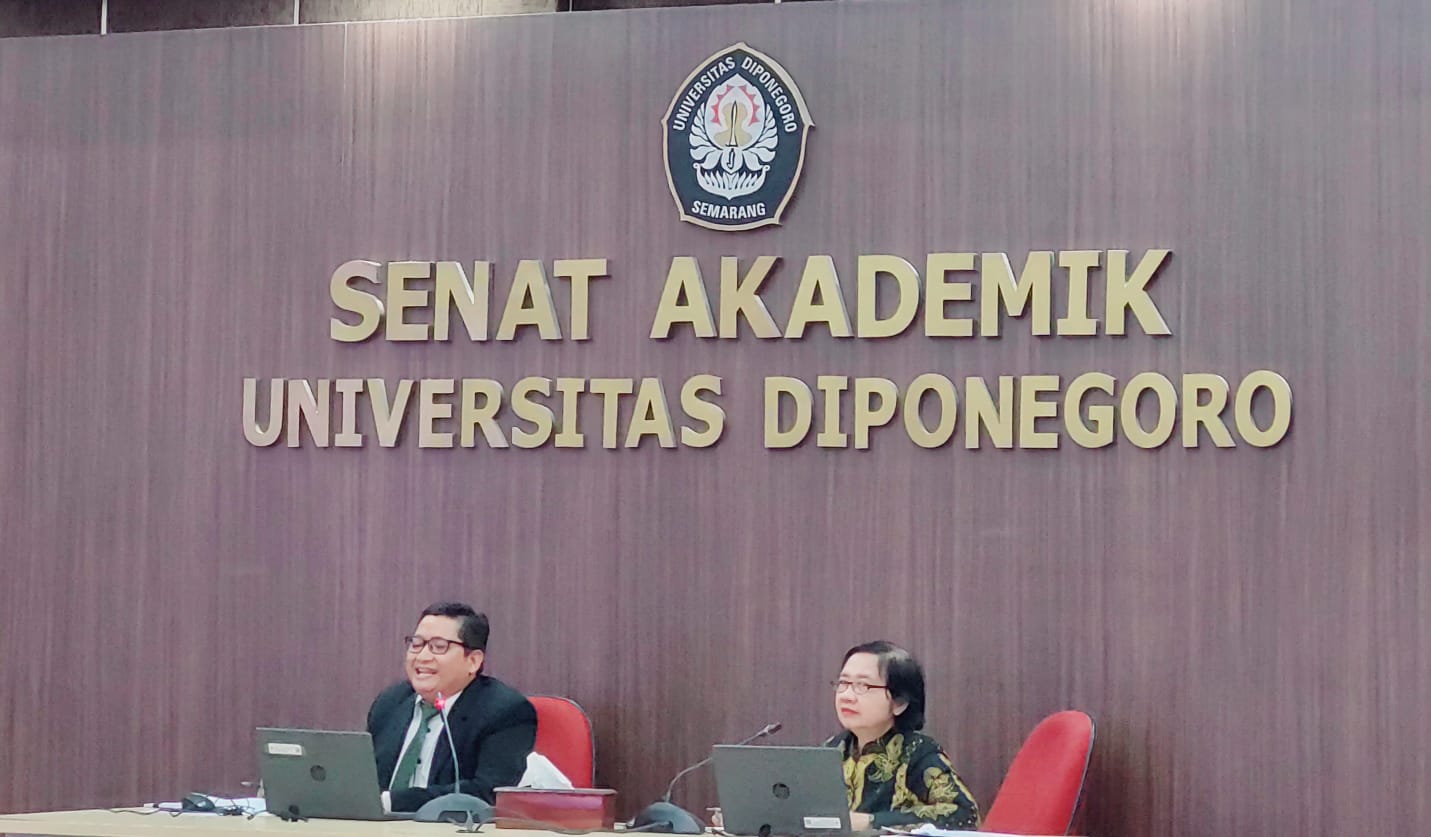Diponegoro University held a scientific paper presentation of three Undip prospective professors organized by the Diponegoro University Board of Professors on Tuesday (20/6). The three prospective professors are Dr. Alamsyah, S.S., M.Hum. (Faculty of Humanities), Dr. Aprilina Purbasari, S.T. (Faculty of Engineering), and Dr. Mohammad Tauviqirrahman, S.T., M.T. (Faculty of Engineering).
In his material on Creative Economy Problems: The Ups and Downs of the Carving Industry in Jepara 1980-2017, Dr. Alamsyah conveyed that Jepara carving is part of the creative industry whose existence can be traced historically. In the 16th century, on the front wall of the Mantingan mosque, there was evidence of carving craft artifacts made of white coral. Sources of the tradition said that carving had existed before the 16th century, namely the Hindu-Buddhist period, through the story of Prabanggkara.
“From 2002 to 2010, carving had ups and downs due to various factors. The indefinite period resumed in 2011 with declining export demand due to various requirements demanded by export destination countries, increasingly expensive raw material prices, and increasingly limited engraver resources. As an economic activity, carving often faces problems in regenerating human resources, raw materials, institutions, protection, innovation, the role of government, and others. These various problems need to be addressed integrally so that carving, which is the identity of the Jepara people, still exists and Jepara continues to be a city of carving,” he explained.
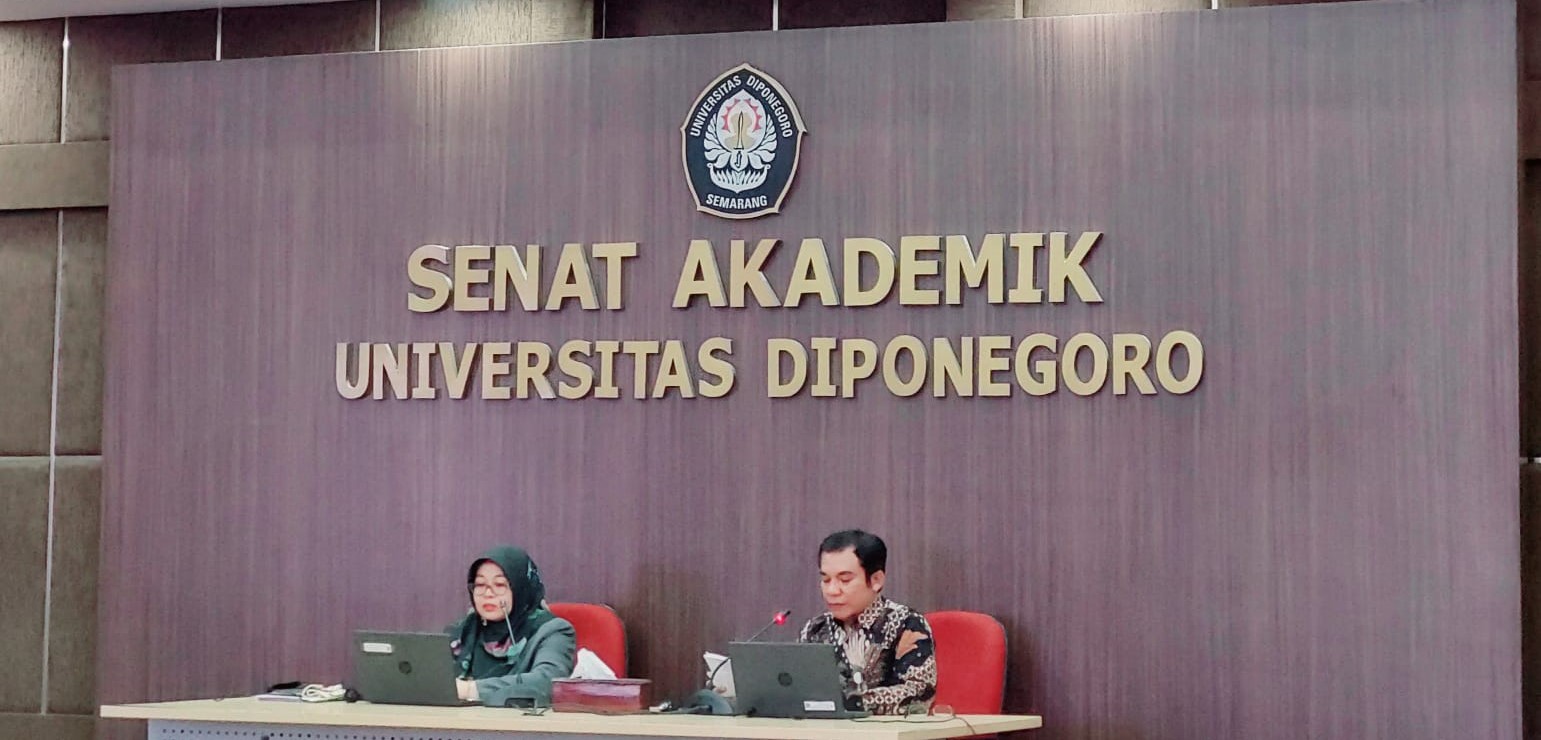
Dr. Aprilina’s presentation regarding Geopolymers from Solid Waste for Sustainable Environmental Applications, discussing the use of solid waste as a result of combustion as raw material for geopolymers, is one of the efforts to reduce the burden on the environment. Furthermore, the application of geopolymer as a low CO2 emission cement and adsorbent in the treatment of water containing heavy metals and dyes is a manifestation of the application of geopolymer as an innovative material in a sustainable environment. Prospects and challenges in applying these geopolymers on an industrial scale need to be studied further.
“Geopolymers have been widely used, among others, as cement with low CO2 emissions, radioactive and toxic waste encapsulation, fire/heat resistant composites, and adhesives. The characteristics of geopolymers with an amorphous structure have also been widely applied as adsorbents for gases, heavy metals, and dyes,” he said.
Meanwhile, Dr. Mohammad Tauviqirrahman discussed the Development of Surface Modification Technology as a Solution for Increasing the Reliability of Lubricated Products. He said that along with the development of industrial equipment technology, both the automotive and transportation industries, as well as the power generation industry, it is essential to pay attention to the lubrication process of engine components. The lubrication process will guarantee the successful functioning of these engine components because it can reduce friction and wear. One of the most widely used lubricated products is bearings for both industrial and medical applications.
“A robust lubrication equation model has been successfully derived. Various modified surface characteristics were successfully modeled and entered into the equation. Through this surface modification technology, impingement on the joints can be prevented. Technology allows the user’s prayer movements to be more convenient,” he explained. (LW-Public Relations)
